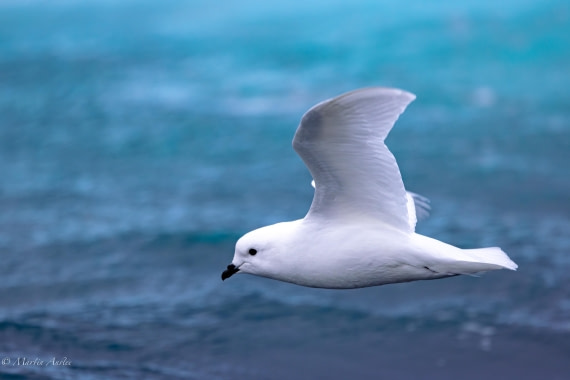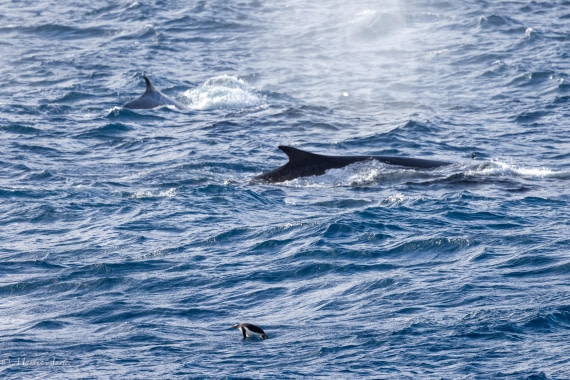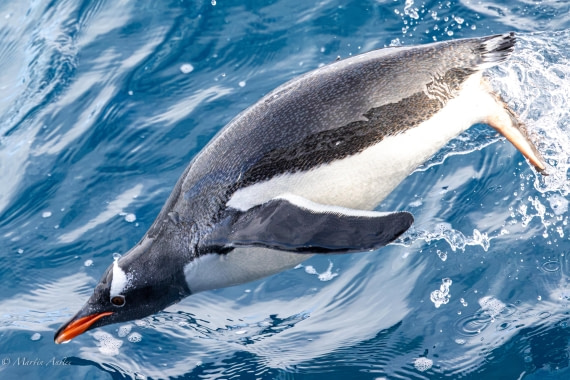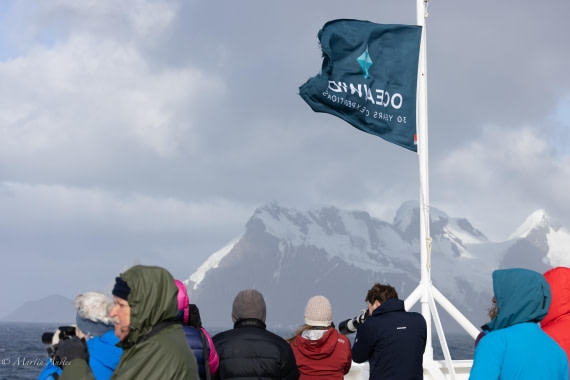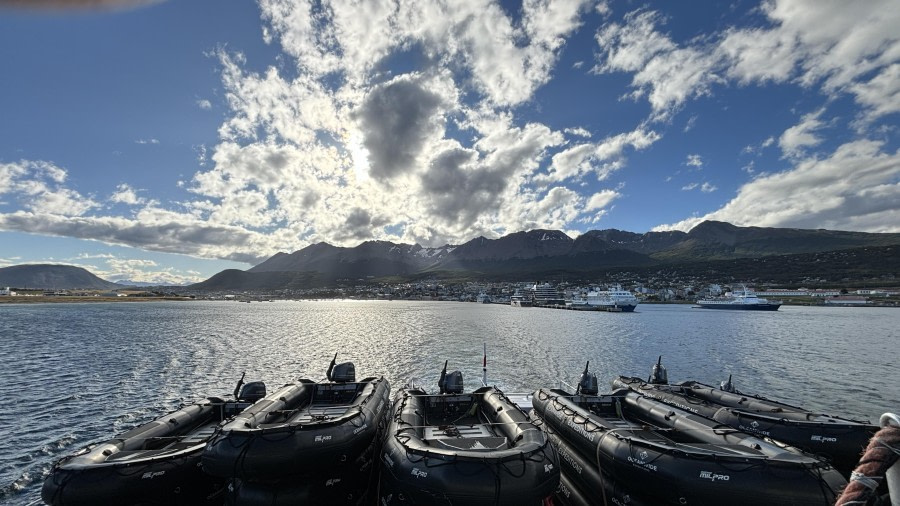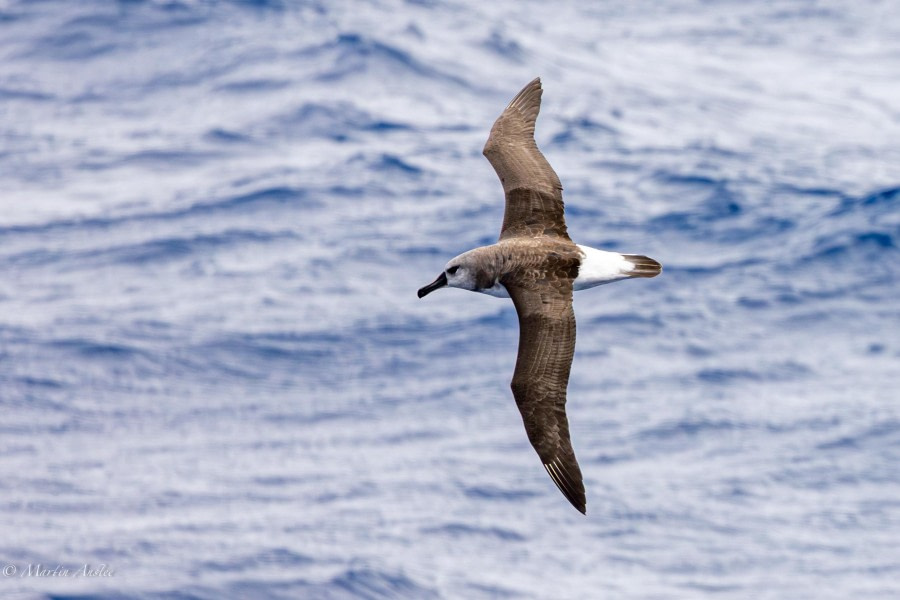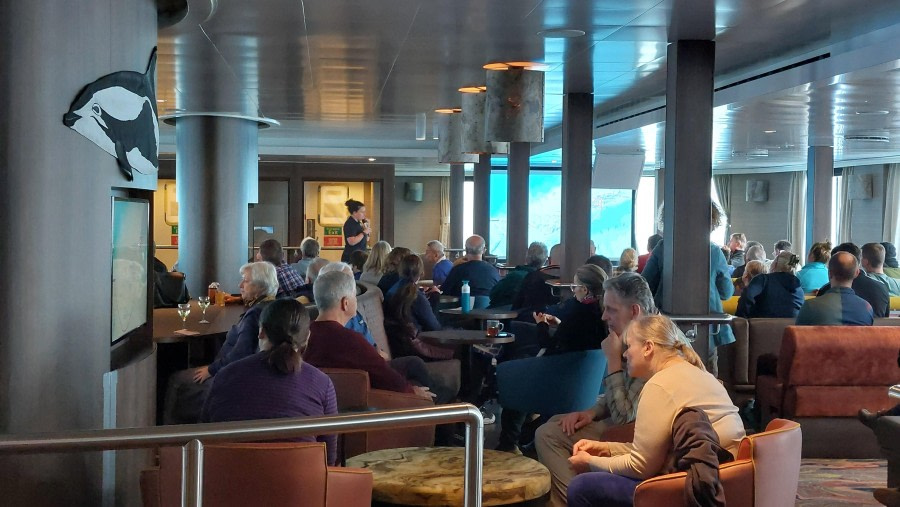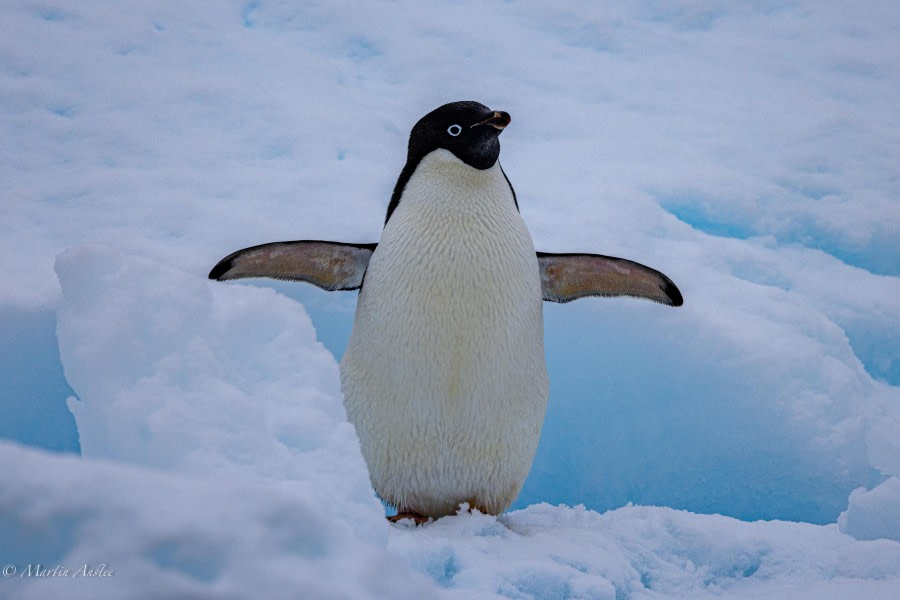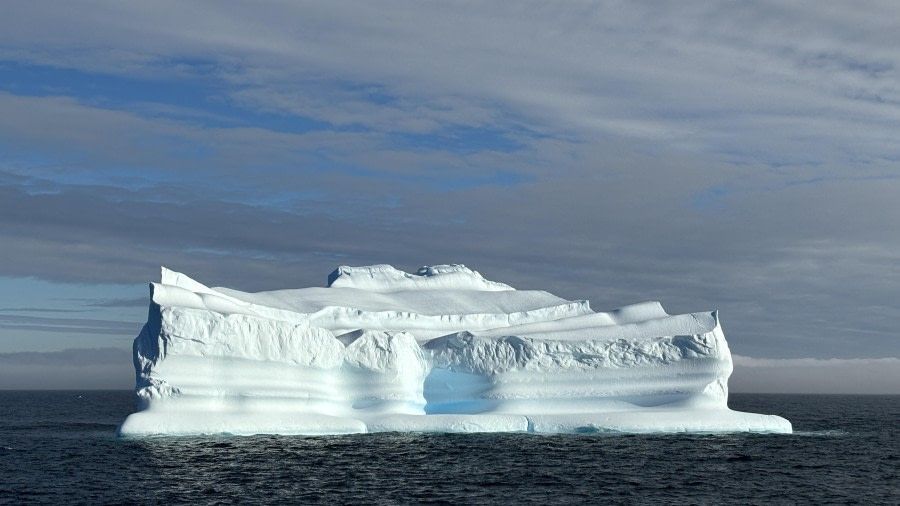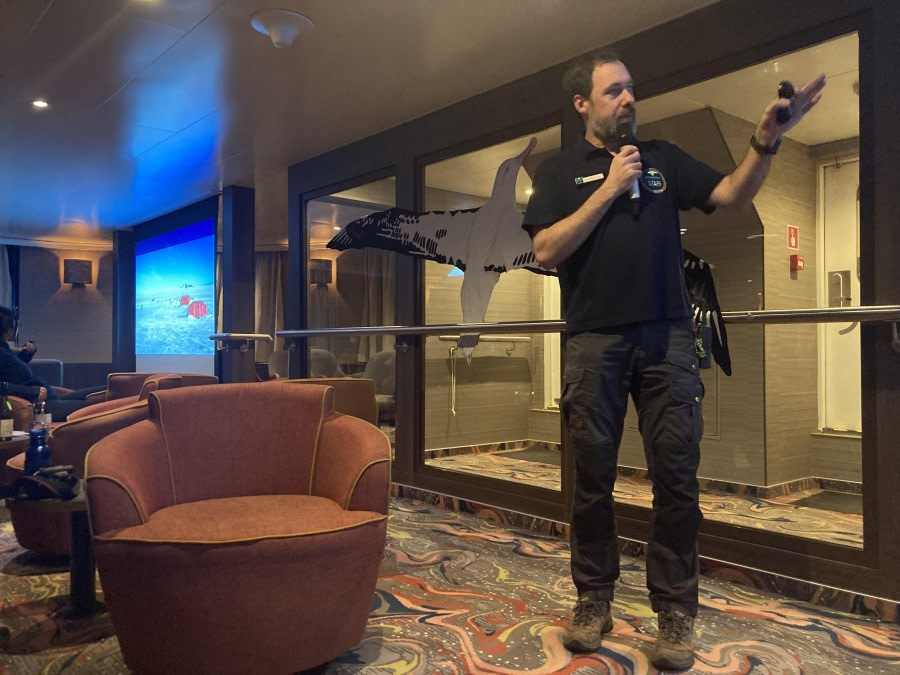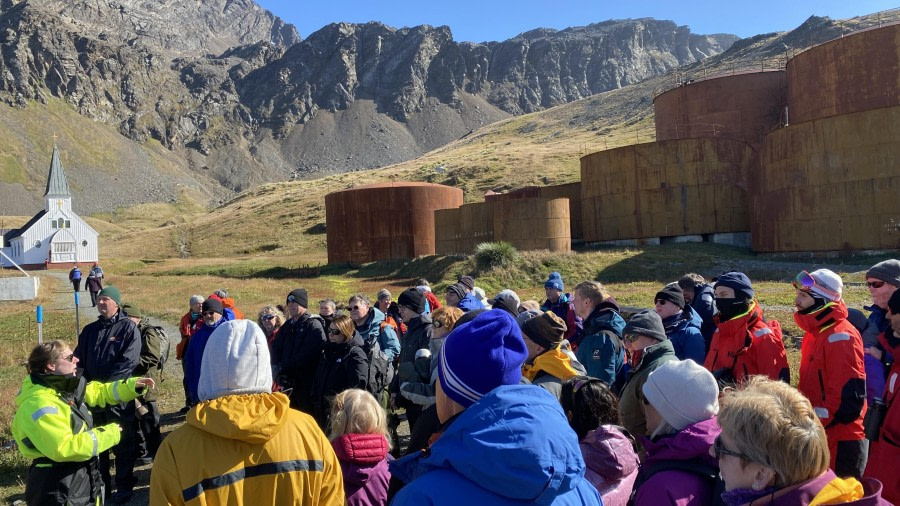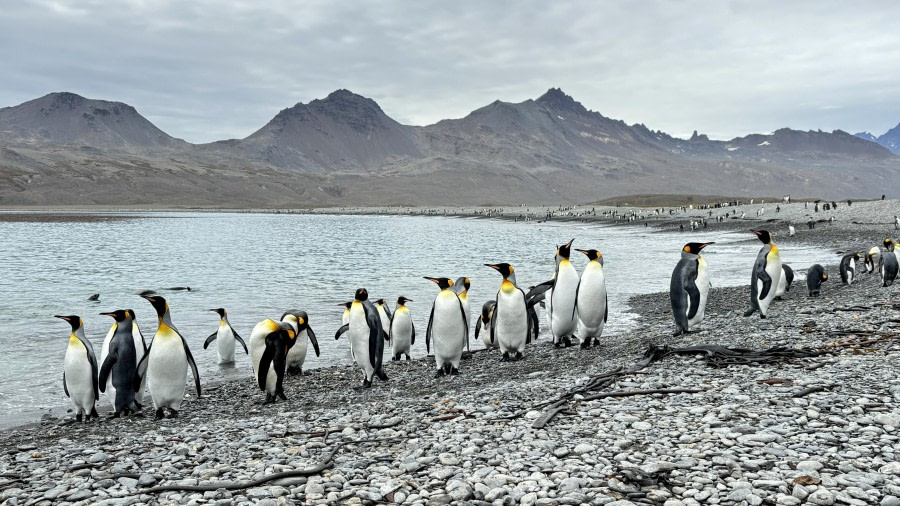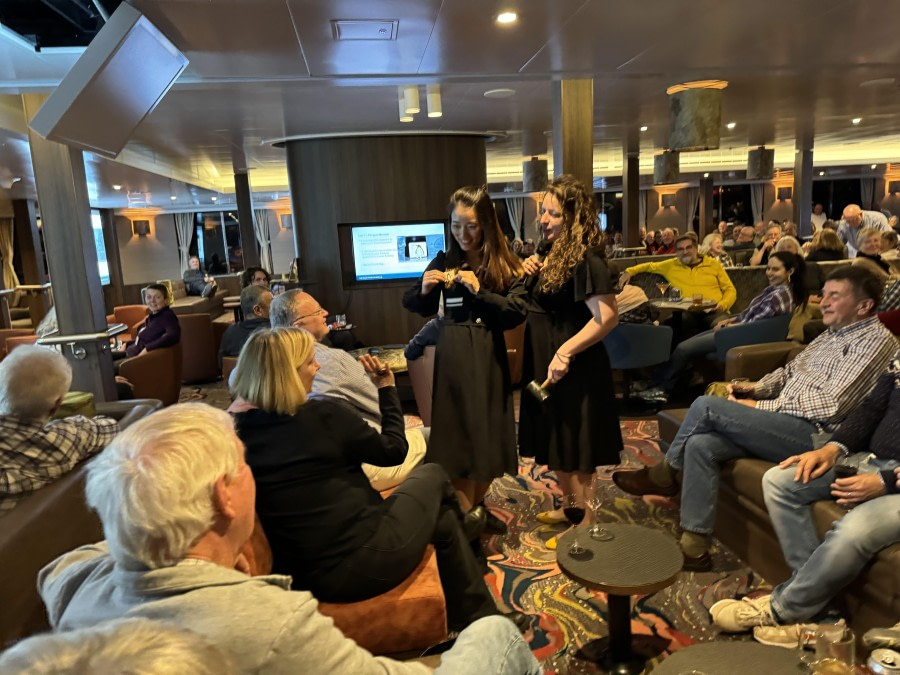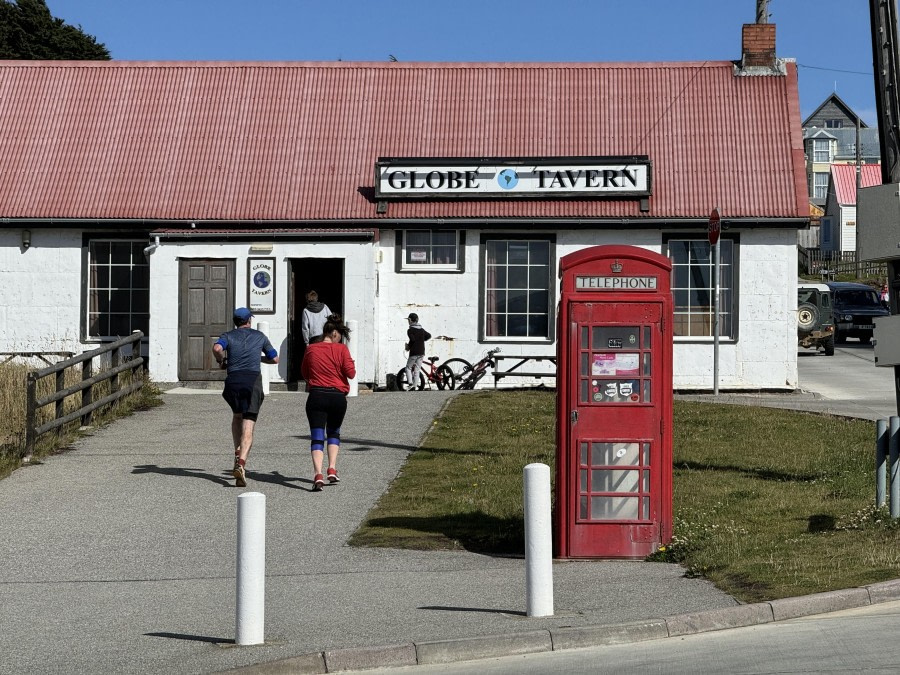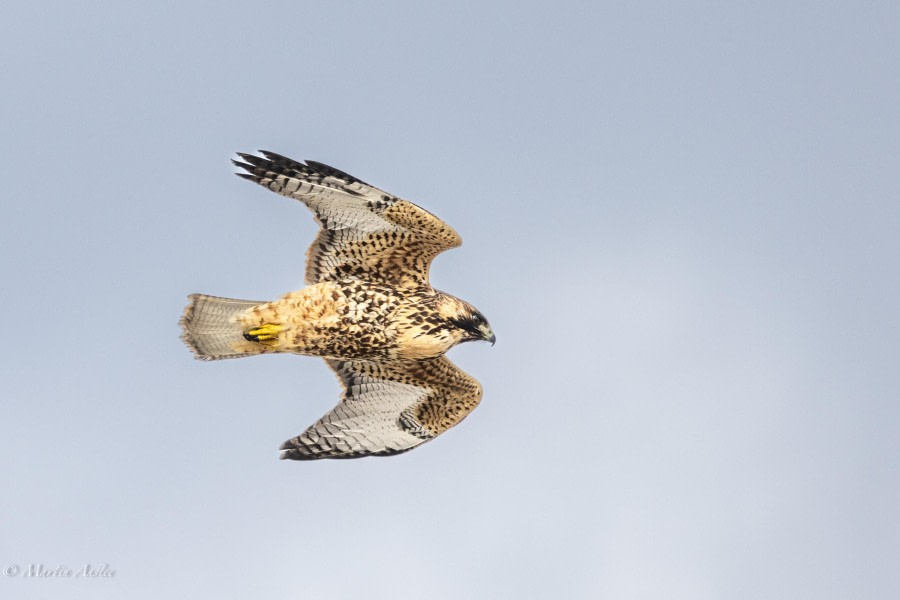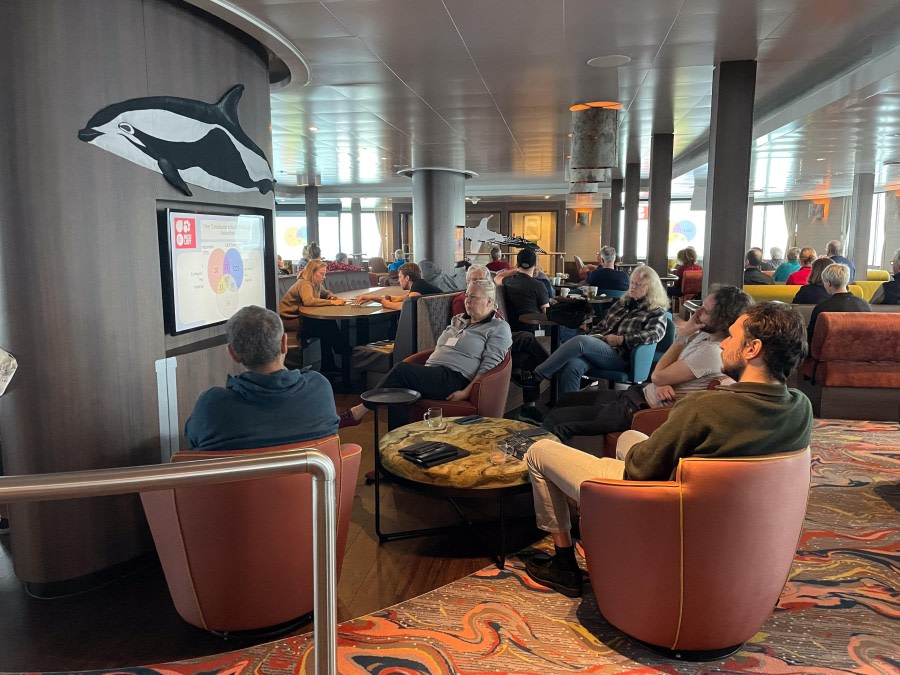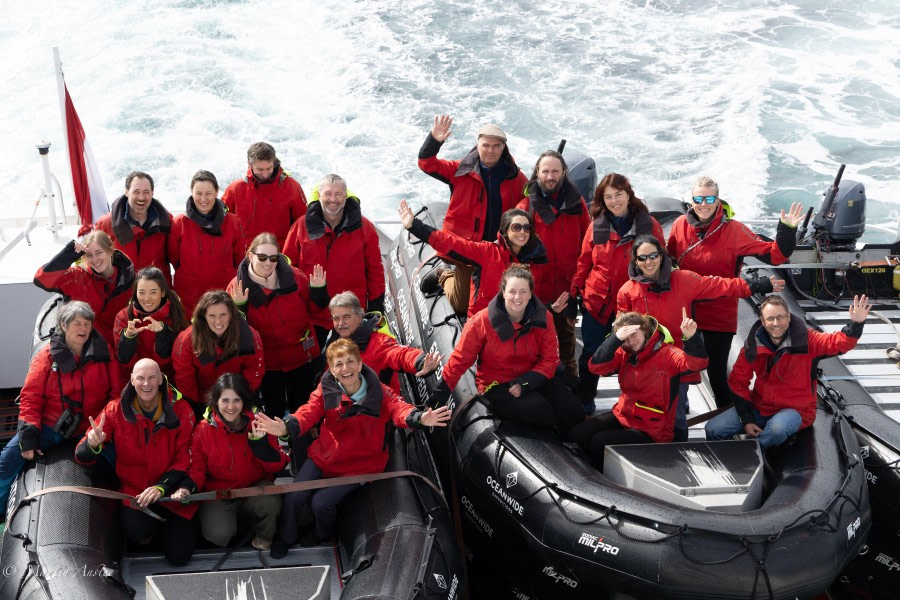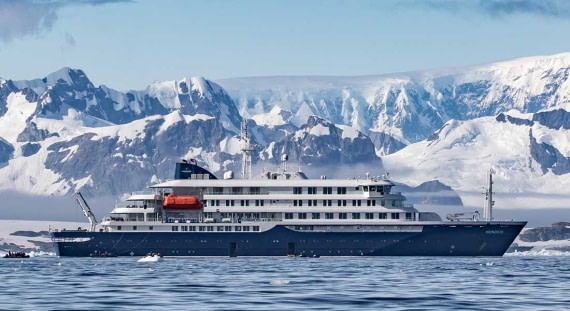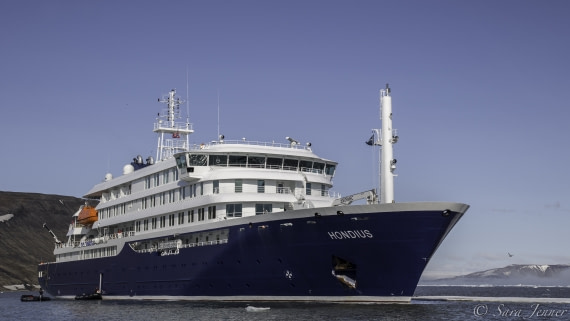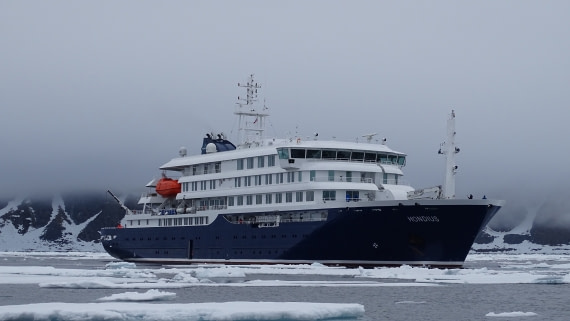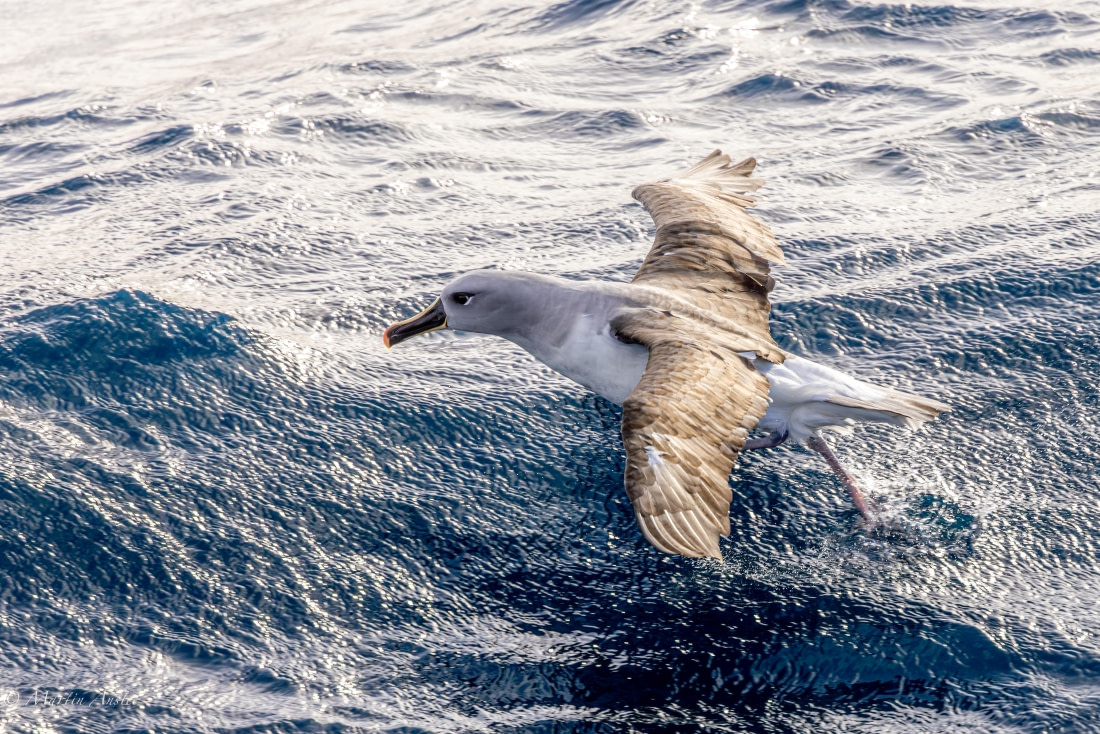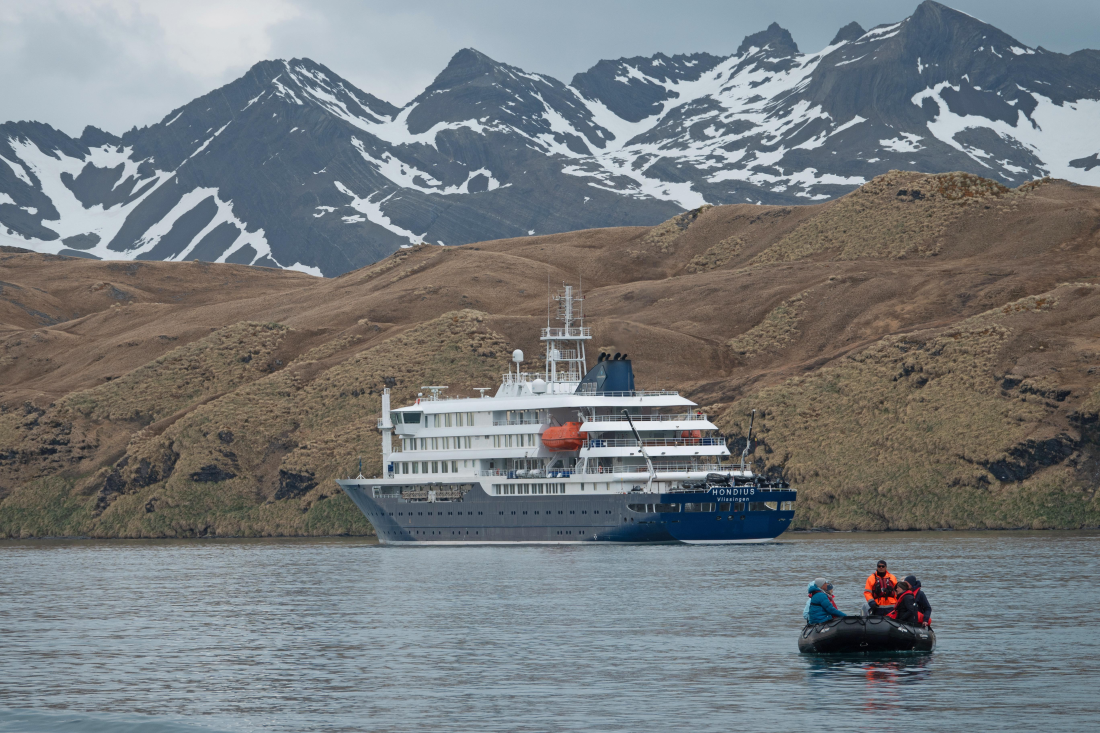| Datum: |
04.03.2024 |
| Positie: |
54°10.6 ’ S / 037°24.6 ’ W |
| Wind: |
ENE 2 |
| Weer: |
Partly cloudy |
| Luchttemperatuur: |
+8 |
Not all travellers are destined to visit the southern side of South Georgia Island. We initially had no plans for such an endeavour, but as they say, every cloud has a silver lining. The day before, it became evident that an approaching storm on the northern coast of the island would prevent us from landing on shore, arranging a Zodiac cruise, or even observing the coastline from the ship's open decks. That's why Pippa, our expedition leader, after consulting with the captain, made the only right decision – to head south, where secluded spots could still be found, sheltered from the hurricane-force winds by the towering barrier of island ridges. One of these places was King Haakon Bay, a large and picturesque fjord located closer to the western tip of South Georgia. That's where we headed. During the night, Hondius rounded Cape Disappointment and continued its journey while already being sheltered by the island's mountain range.
The morning started with a surprise that no one had expected at all. Instead of the usual wake-up call through the speakers, we heard Pippa's cheerful and slightly excited voice announcing that we had spotted two Blue Whales! None of the expedition team members had ever seen Blue Whales in the waters of South Georgia. A hundred years ago, this region was the site of barbaric hunting of these sea giants. Small boats with heavy harpoon cannons on their bows roamed everywhere, tracking their prey. Killed whales were towed to whaling stations, where their bodies were cut into pieces, yielding a valuable product, whale oil! Unfortunately, hunters did not stop until they had slaughtered all the whales. The miraculously surviving animals dispersed throughout the Southern Ocean. And now, finally, we could gradually observe the whales returning to South Georgia. Standing on the open decks, we watched as these huge creatures, the largest ever to have lived on Earth, spouted fountains of spray into the air, exhaling, and showed us their backs with their comically tiny dorsal fins.
The southern coastline differed significantly from the north. There was much less vegetation here, and the huge glaciers covering most of the mountains didn't terminate in the middle of valleys but reached all the way to the sea. Hondius dropped anchor not far from the famous Cape Rosa. It was here that Sir Ernest Henry Shackleton brought James Caird. It was here that he first set foot on solid ground since leaving Point Wild. And now, solely due to the bad weather on the northern coast of the island, we were presented with a unique opportunity to visit the very place where Shackleton and his comrades rested and gathered strength before embarking on the final leg of their desperate journey and walking to the whaling station at Stromness.
The Zodiacs were lowered into the water, we set off on a Zodiac cruise. The bay where Shackleton found shelter was tiny, no more than 30 people could be there at once. Therefore, it was decided to establish a strict order. Pippa gradually invited us, two Zodiacs at a time, for a short landing on the shore so that we, like Shackleton, could set foot on South Georgia and take a photo against the backdrop of the very cave where he and his faithful companions set up camp. To be fair, it wasn't really a cave, but rather a deep niche in the rock. Nearby, baby elephant seals frolicked in the grass, and South Georgian Pipits chirped cheerfully in the air.
The landing on the shore took no more than ten minutes. For the rest of the time, we explored the coastline of Cape Rosa from the water. Several fairly large icebergs drifted nearby, ambassadors of the giant iceberg A23a, which we had seen a few days earlier. We had to navigate around them, maintaining a safe distance. The shores of Cape Rosa were sometimes low but steep, sometimes even sheer. There were even two real caves, each of which could be entered by Zodiac. If the first, located not far from Shackleton's landing site, was only about ten meters long, the second was much larger and represented a much longer corridor. At its end, there was dense semi-darkness, the roar of the engine, greatly amplified by the echo, reverberated heavily through the vaults. It was, to be honest, quite eerie, but we, being absolutely confident in the skill of our guides, didn't worry at all.
By noon, the Zodiac cruise had come to an end. We returned to the ship and, removing our outerwear, headed to the restaurant for lunch. Meanwhile, Hondius weighed anchor and headed deeper into the fjord towards a small cape called Peggotty Bluff. It was decided to arrange another Zodiac cruise there to get closer to the glacier descending into the sea. Once again, we boarded the Zodiacs and set out to explore this section of King Haakon Bay. The landscape was quite different from what we had seen in the morning: sheer mountain walls, topped with glaciers, cascading waterfalls, fur seals, and giant petrels, brash ice, and small icebergs. The terrain resembled one of the fjords of Spitsbergen so much that it felt like taking binoculars and scanning the area to see if a Polar Bear was lurking nearby. Peggotty Bluff itself was a small hill, inhabited by King penguins and fur seals. It was here that Ernest Shackleton once made his final stop before embarking on his heroic trek across the mountains and glaciers to the whaling station at Stromness. Back on the ship, we gathered in the main lounge for a daily recap. Pippa briefed us on the plans for the next day. Later, as the sunset rays painted the icebergs and coastline golden, Hondius ventured into open sea to circumnavigate South Georgia from the west and return to its northern coast. The sea became rough, so some of us even needed seasickness medication. It was a very unusual and wonderfully surprising day!

